
Metal packaging products manufacturer Crown Holdings (NYSE:CCK) reported Q2 CY2025 results beating Wall Street’s revenue expectations, with sales up 3.6% year on year to $3.15 billion. Its non-GAAP profit of $2.15 per share was 14.7% above analysts’ consensus estimates.
Is now the time to buy Crown Holdings? Find out by accessing our full research report, it’s free.
Crown Holdings (CCK) Q2 CY2025 Highlights:
- Revenue: $3.15 billion vs analyst estimates of $3.12 billion (3.6% year-on-year growth, 0.9% beat)
- Adjusted EPS: $2.15 vs analyst estimates of $1.87 (14.7% beat)
- Adjusted EBITDA: $552 million vs analyst estimates of $508.9 million (17.5% margin, 8.5% beat)
- Management raised its full-year Adjusted EPS guidance to $7.30 at the midpoint, a 5.8% increase
- Operating Margin: 12.4%, in line with the same quarter last year
- Free Cash Flow Margin: 12.5%, similar to the same quarter last year
- Market Capitalization: $12.22 billion
Company Overview
Formerly Crown Cork & Seal, Crown Holdings (NYSE:CCK) produces packaging products for consumer marketing companies, including food, beverage, household, and industrial products.
Revenue Growth
Reviewing a company’s long-term sales performance reveals insights into its quality. Any business can experience short-term success, but top-performing ones enjoy sustained growth for years. Unfortunately, Crown Holdings’s 1.2% annualized revenue growth over the last five years was weak. This fell short of our benchmarks and is a rough starting point for our analysis.
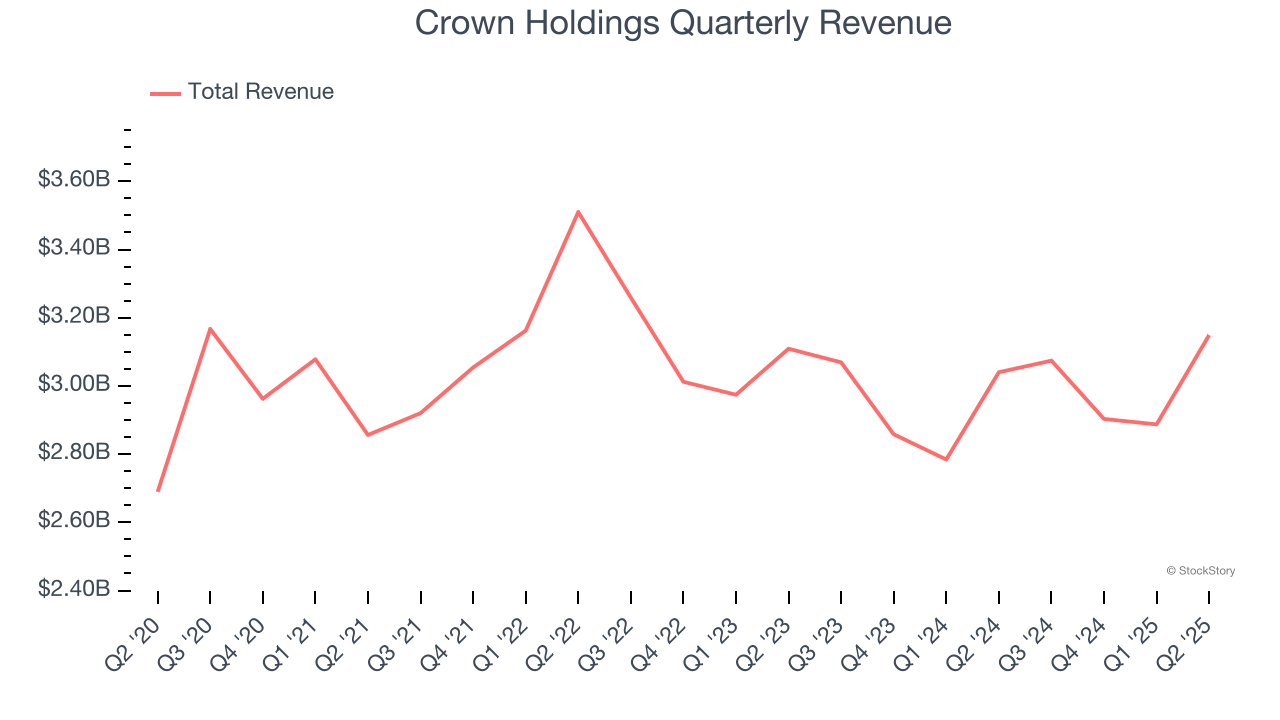
We at StockStory place the most emphasis on long-term growth, but within industrials, a half-decade historical view may miss cycles, industry trends, or a company capitalizing on catalysts such as a new contract win or a successful product line. Crown Holdings’s performance shows it grew in the past but relinquished its gains over the last two years, as its revenue fell by 1.4% annually. Crown Holdings isn’t alone in its struggles as the Industrial Packaging industry experienced a cyclical downturn, with many similar businesses observing lower sales at this time. 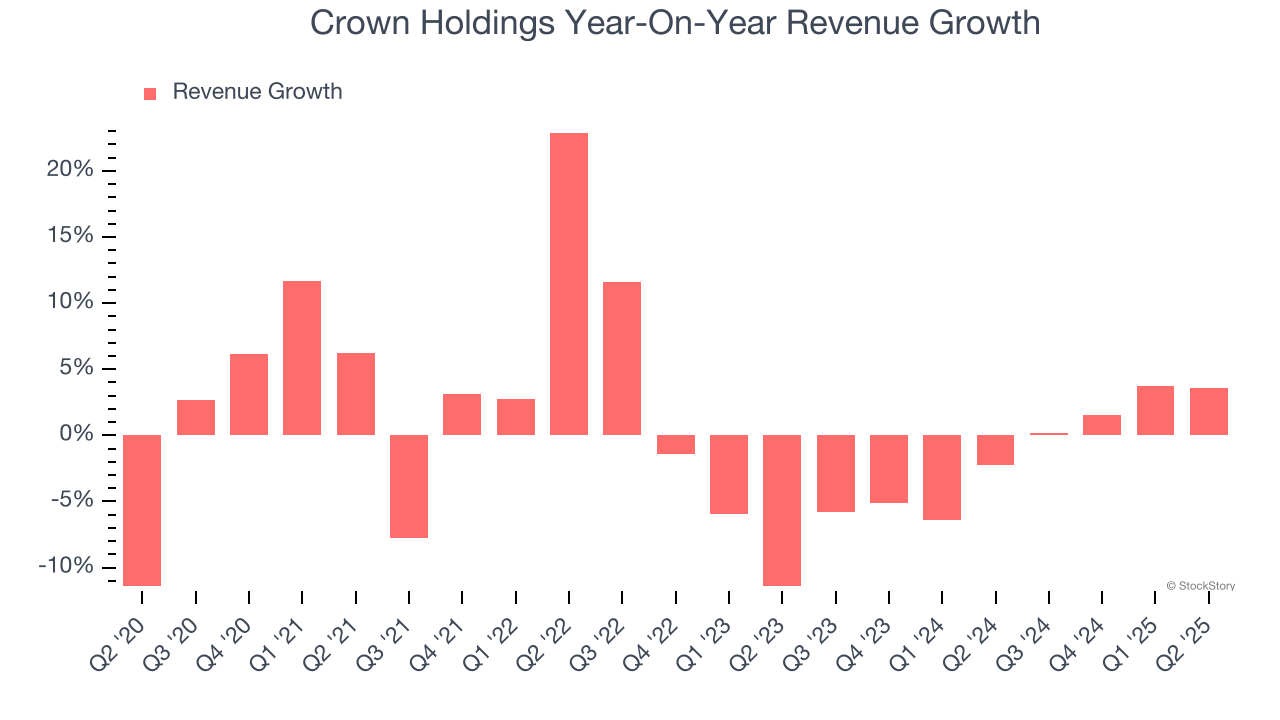
This quarter, Crown Holdings reported modest year-on-year revenue growth of 3.6% but beat Wall Street’s estimates by 0.9%.
Looking ahead, sell-side analysts expect revenue to grow 2.3% over the next 12 months. Although this projection indicates its newer products and services will spur better top-line performance, it is still below average for the sector.
Today’s young investors won’t have read the timeless lessons in Gorilla Game: Picking Winners In High Technology because it was written more than 20 years ago when Microsoft and Apple were first establishing their supremacy. But if we apply the same principles, then enterprise software stocks leveraging their own generative AI capabilities may well be the Gorillas of the future. So, in that spirit, we are excited to present our Special Free Report on a profitable, fast-growing enterprise software stock that is already riding the automation wave and looking to catch the generative AI next.
Operating Margin
Operating margin is one of the best measures of profitability because it tells us how much money a company takes home after procuring and manufacturing its products, marketing and selling those products, and most importantly, keeping them relevant through research and development.
Crown Holdings has managed its cost base well over the last five years. It demonstrated solid profitability for an industrials business, producing an average operating margin of 11.1%. This result was particularly impressive because of its low gross margin, which is mostly a factor of what it sells and takes huge shifts to move meaningfully. Companies have more control over their operating margins, and it’s a show of well-managed operations if they’re high when gross margins are low.
Analyzing the trend in its profitability, Crown Holdings’s operating margin rose by 1.9 percentage points over the last five years, as its sales growth gave it operating leverage. Its expansion was impressive, especially when considering the cycle turned in the wrong direction and most of its Industrial Packaging peers observed plummeting revenue and margins.
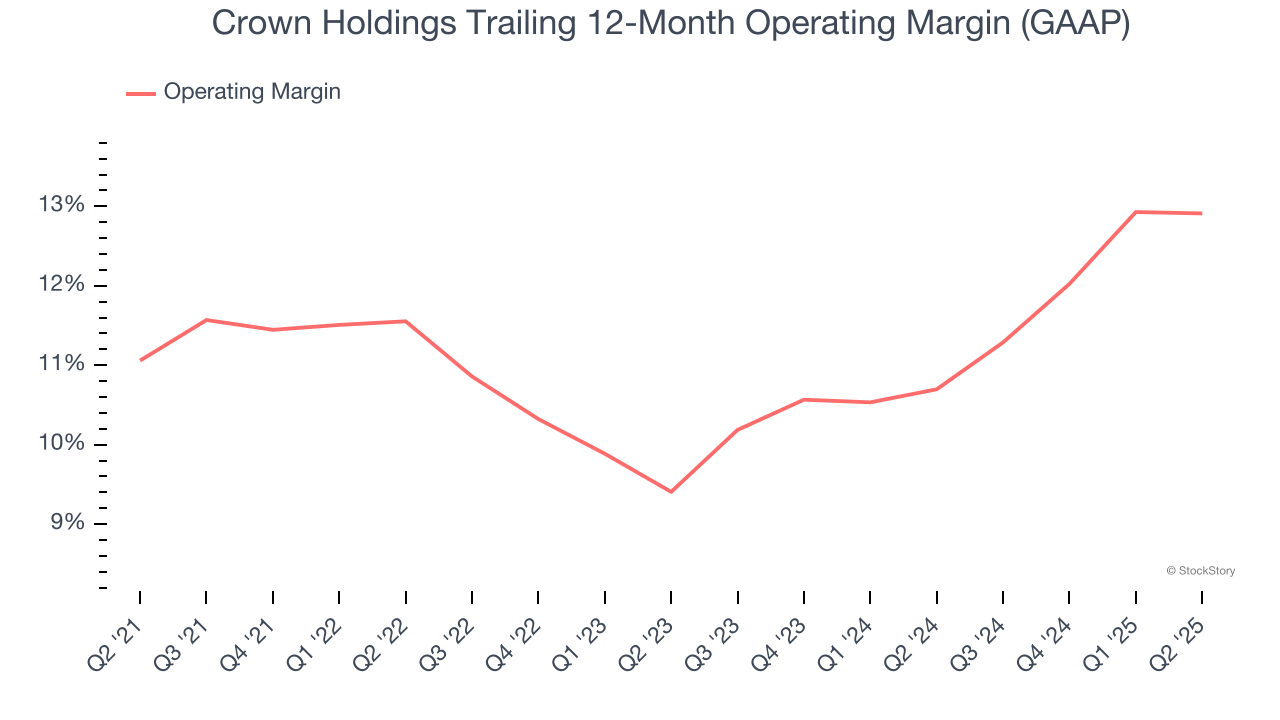
This quarter, Crown Holdings generated an operating margin profit margin of 12.4%, in line with the same quarter last year. This indicates the company’s cost structure has recently been stable.
Earnings Per Share
Revenue trends explain a company’s historical growth, but the long-term change in earnings per share (EPS) points to the profitability of that growth – for example, a company could inflate its sales through excessive spending on advertising and promotions.
Crown Holdings’s EPS grew at an unimpressive 7.9% compounded annual growth rate over the last five years. On the bright side, this performance was better than its 1.2% annualized revenue growth and tells us the company became more profitable on a per-share basis as it expanded.
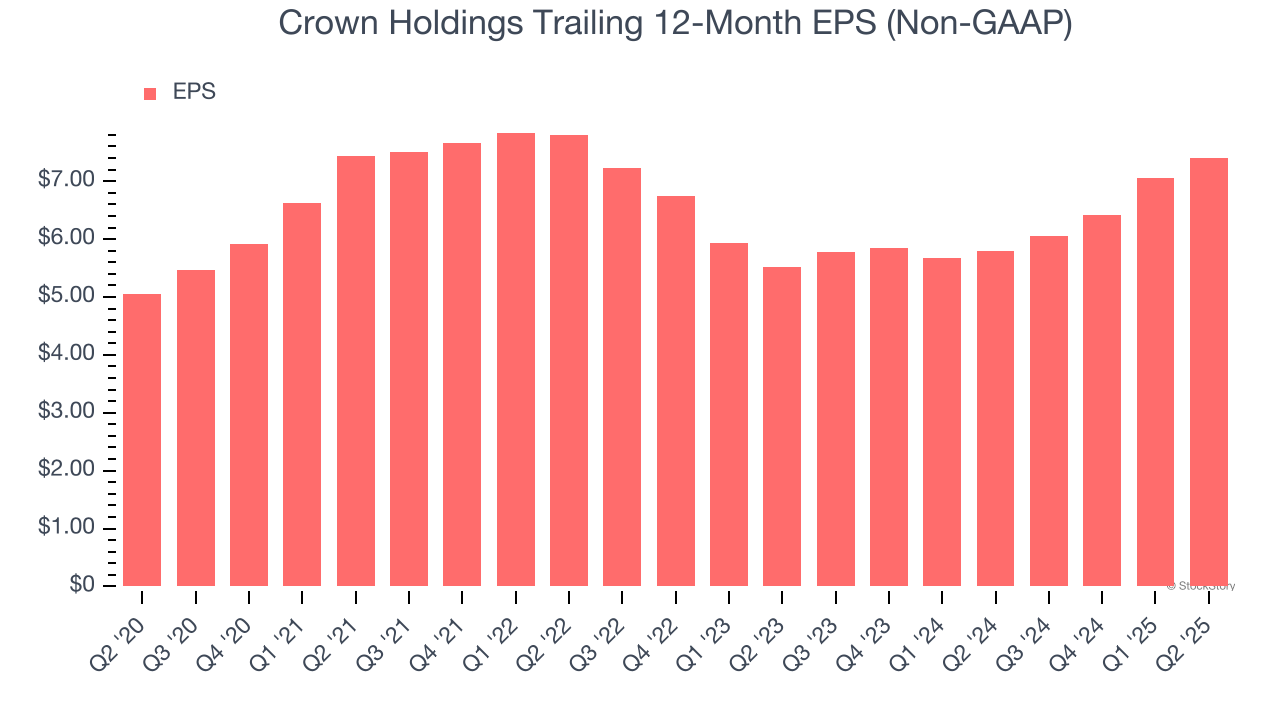
Diving into the nuances of Crown Holdings’s earnings can give us a better understanding of its performance. As we mentioned earlier, Crown Holdings’s operating margin was flat this quarter but expanded by 1.9 percentage points over the last five years. On top of that, its share count shrank by 13.6%. These are positive signs for shareholders because improving profitability and share buybacks turbocharge EPS growth relative to revenue growth. 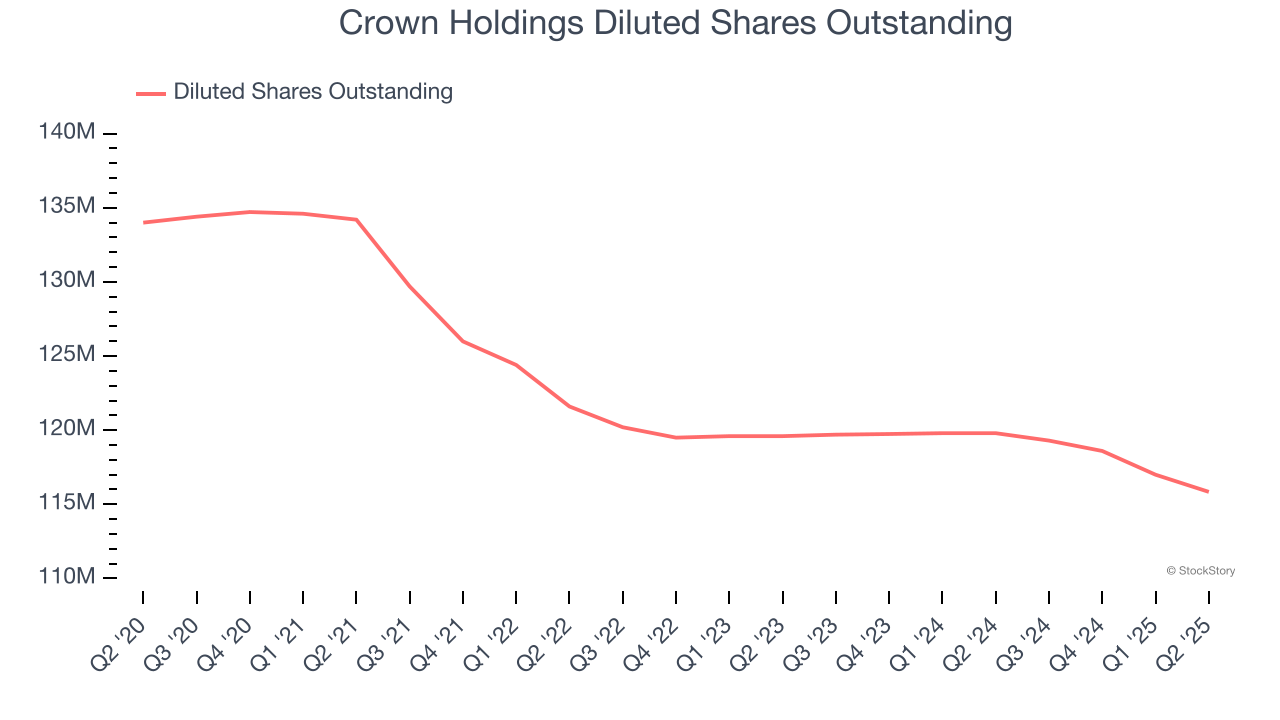
Like with revenue, we analyze EPS over a more recent period because it can provide insight into an emerging theme or development for the business.
For Crown Holdings, its two-year annual EPS growth of 15.9% was higher than its five-year trend. This acceleration made it one of the faster-growing industrials companies in recent history.
In Q2, Crown Holdings reported EPS at $2.15, up from $1.81 in the same quarter last year. This print easily cleared analysts’ estimates, and shareholders should be content with the results. Over the next 12 months, Wall Street expects Crown Holdings’s full-year EPS of $7.40 to shrink by 2.4%.
Key Takeaways from Crown Holdings’s Q2 Results
Revenue didn't beat by much, but we liked that Crown Holdings exceeded analysts’ EBITDA expectations this quarter. We were also glad its full-year EPS guidance exceeded Wall Street’s estimates. Zooming out, we think this quarter featured some important positives. Investors were likely hoping for more, and shares traded down 2.5% to $102.15 immediately following the results.
Should you buy the stock or not? We think that the latest quarter is only one piece of the longer-term business quality puzzle. Quality, when combined with valuation, can help determine if the stock is a buy. We cover that in our actionable full research report which you can read here, it’s free.
